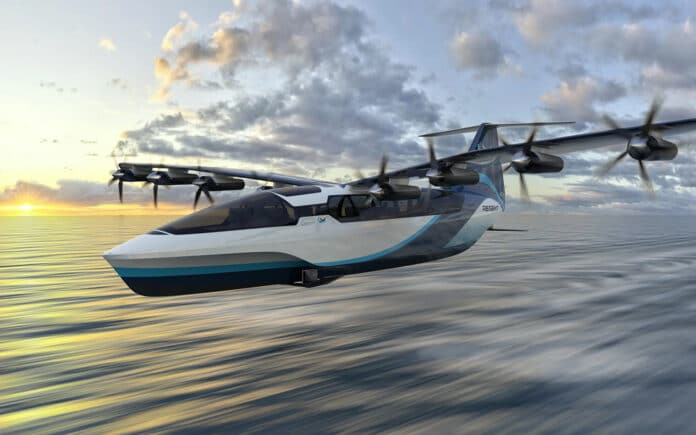The boston-based company, Regent, has received an Approval in Principle (AiP) from Bureau Veritas Marine & Offshore for the design of its novel seaglider, a wing-in-ground effect vehicle that travels exclusively over the water. Regent’s Viceroy is the world’s first electric seaglider – a hybrid vehicle described as part aircraft, part boat.
This AiP marks an important certification milestone for seagliders, offering a clear path for the vehicle’s classification as a wing-in-ground effect (WIG) maritime vessel and the commencement of commercial seaglider operations. Regent currently has a backlog of $7B in provisional orders for their seagliders from ferry and aviation operators.
Bureau Veritas is a major global classification society that is backed up by 190 years of experience in reviewing and approving novel seagoing vessels such as Regent’s seaglider. Regent has been collaborating with Bureau Veritas Marine & Offshore’s engineers for 10 months now. The AiP includes a series of workshops encompassing aspects of the vehicle’s structure, mechanical systems, avionics, propulsion, and safety systems.
Throughout the process, Bureau Veritas provided preliminary expert advice with a focus on the early identification of rules and regulatory framing for the seaglider’s classification. This AiP marks an important milestone for Regent before it commences serial production of the new vessel. It’s a significant step forward in enabling seaglider operations in countries around the world.
This Approval in Principle will be followed by a design appraisal process, a series of technical studies that are now underway that will allow the implementation of the seaglider’s design and operation without significant risk of compliance or qualification issues.
The electric Viceroy seaglider is a wing-in-ground-effect craft that operates a few meters off the water’s surface and couples the high speed of an airplane with the low operating cost of a boat. The company says their vehicle will service routes up to 180 miles with existing battery technology and routes up to 500 miles with next-gen batteries, all via existing dock infrastructure. The vessel is designed to carry up to 12 passengers. When it hits the water, the Viceroy takes it up a notch, being able to reach up to 184 mph (296 km/h).
The full-scale prototypes will begin sea trials by 2023, and the company plans to launch its first electric Viceroy in 2025.
